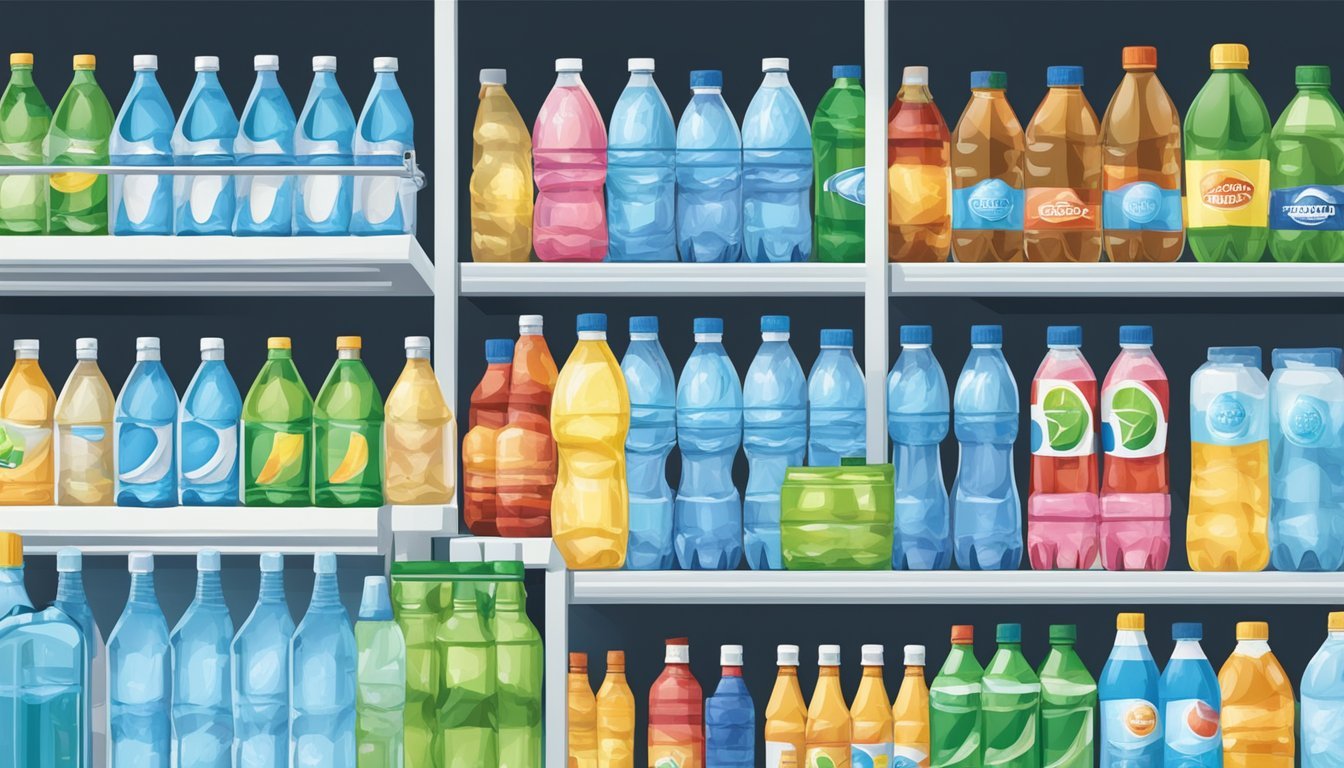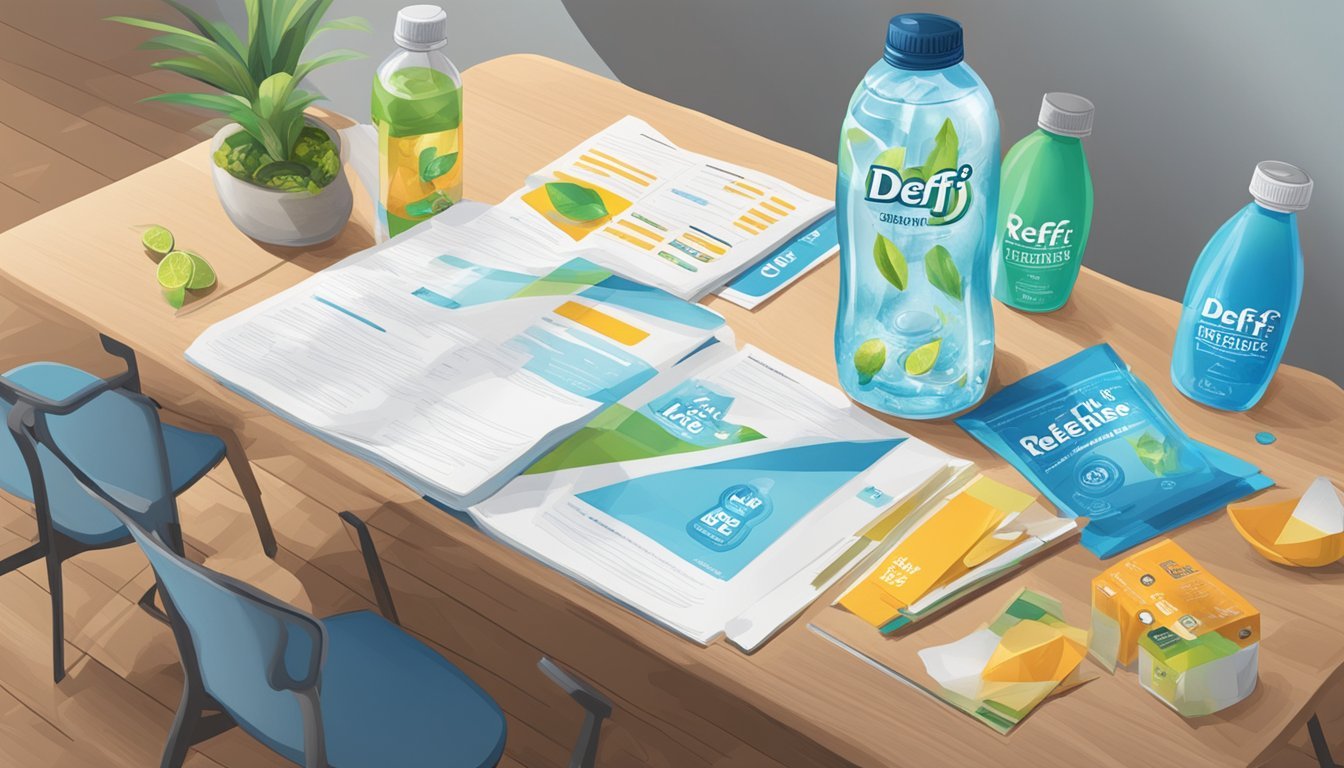Defy vs. Refreshe
Which Bottled Water is Better? An Analysis
Choosing the right bottled water can be daunting with so many options on the market. Defy, co-founded by retired NFL running back Terrell Davis, offers a solid middle-of-the-road choice with its clean taste and dependable quality. On the other hand, Refreshe presents a purified water option that stands out for its clean and unembellished profile, claimed to have a pH level of 7.4.
For those focusing on a healthy lifestyle, Defy integrates elements like electrolytes to support hydration, potentially appealing to active individuals. Meanwhile, Refreshe boasts a straightforward composition with zero calories, zero fat, and zero sodium, ideal for those seeking pure hydration without added elements. Both brands cater to different consumer preferences, making it critical to pinpoint what qualities you prioritize in your water.
Defy might appeal more to athletes or those looking for a slight nutritional boost in their bottled water. In contrast, Refreshe's no-fuss, clean taste could be favorable for individuals wanting a neutral and refreshing drink. From electrolytes to simplicity, each brand brings its own strengths to the table, guiding consumers toward a choice that aligns with their needs.
Understanding Water Fundamentals
Understanding the basics of bottled water can help consumers make informed choices. Key points to focus on include the different types of bottled water available, the role of hydration in health, and factors affecting the taste of drinking water.
Types of Bottled Water
Bottled water comes in several types, each with unique characteristics. Spring water is sourced from natural springs and often contains minerals. Purified water undergoes treatment to remove impurities and may originate from municipal tap water. Mineral water is rich in dissolved minerals like calcium and magnesium, which can offer health benefits. Sparkling water contains dissolved carbon dioxide gas, giving it effervescence. Electrolyte-enhanced water contains added electrolytes, such as sodium, potassium, and chloride, which can aid in hydration.
Importance of Hydration
Hydration is critical for maintaining overall health. Water is vital for numerous bodily functions, including regulating body temperature, maintaining electrolyte balance, and supporting cellular processes. Adequate hydration helps prevent dehydration, which can lead to symptoms like headaches, fatigue, and impaired cognitive function. Drinking water regularly promotes optimal physical performance and can also aid in weight management by helping to control appetite.
Taste Factors in Drinking Water
The taste of drinking water can vary based on several factors. Mineral content plays a significant role, with minerals like calcium and magnesium contributing to a difference in taste. Chlorination and other purification methods used to treat tap water can also affect flavor, with some people perceiving a slight chemical taste. Ozonation, a method where ozone disinfects water, can leave a cleaner, fresher taste. Bottled water brands may use different purification and filtration techniques, influencing the final taste profile of the water. Some prefer the taste of bottled water over tap water due to these differences.
Brands and Products
The following sections cover essential specifics about Defy Water and Refreshe Water, comparing their characteristics, and providing context with other bottled water brands.
Defy Water Overview
Defy Water is known for its emphasis on purity and sustainability. It sources its water from natural springs, ensuring a crisp and refreshing taste. The company also invests in environmentally friendly packaging, using materials that are recyclable and reduce carbon footprint.
Mineral Content: Defy Water contains essential minerals like calcium and magnesium, which contribute to its health benefits.
Taste Profile: Reviews mention a clean, neutral taste, making it a favorite among those who prefer a subtle flavor in their bottled water.
Packaging: The design is sleek and modern, appealing to environmentally conscious consumers.
Refreshe Water Overview
Refreshe Water is a popular choice due to its affordability and widespread availability. It is sourced from multiple locations and undergoes rigorous purification processes to ensure safety and taste.
Purification Process: Refreshe Water uses advanced filtration systems to remove impurities, offering a consistent and reliable product.
Accessibility: Widely available in supermarkets and convenience stores, it is a go-to option for many customers.
Taste: Users often describe its taste as clean and refreshing, though some note a slight aftertaste compared to premium brands.
Comparison with Other Brands
Core Hydration: Similar to Defy, Core promotes its balanced pH and mineral content. It is marketed as ideal for hydration and overall wellness.
Essentia: Known for its high pH level and ionized water, Essentia caters to consumers looking for enhanced hydration.
Fiji Water: Features naturally occurring electrolytes and a distinctive soft, smooth taste. It is sourced from an aquifer in Fiji, which contributes to its unique profile.
Smartwater: Another competitor, Smartwater, focuses on vapor distillation for purity and adds electrolytes for taste.
Voss: Voss offers a premium feel with its artesian water and glass bottle packaging, appealing to high-end users.
Icelandic Glacial: This brand stands out for its naturally low mineral content and purity, sourced from Iceland's springs.
Comparative Analysis: While Defy and Refreshe occupy different market segments, Defy targets environmentally conscious consumers with a premium product, while Refreshe appeals to cost-sensitive shoppers looking for a reliable, everyday option.
Health and Safety Concerns
When it comes to bottled water, customers often prioritize both health benefits and regulatory compliance. Understanding how Defy and Refreshe meet these standards is crucial.
Bottled Water Regulations
Bottled water in the United States is regulated by the Food and Drug Administration (FDA). This contrasts with tap water, which falls under the Environmental Protection Agency (EPA) and the Safe Drinking Water Act. These regulations are designed to ensure that bottled water is safe for consumption.
Companies are required to regularly test for contaminants such as lead, PFAS (per- and polyfluoroalkyl substances), and other impurities. Adherence to these standards helps maintain clean drinking water, free from harmful substances. Both Defy and Refreshe claim to meet or exceed these regulatory standards, providing an extra layer of assurance for consumers.
Health Benefits and Risks
Bottled water brands often highlight the absence of contaminants, touting their products as a healthier choice. Both Defy and Refreshe are marketed as options that protect against common waterborne contaminants. This includes filtering out lead and PFAS, which have been linked to various health issues.
While purified or spring water can be beneficial, overconsumption of specific elements can pose risks. For instance, excessive manganese is harmful, and some brands have been recalled due to high levels. Always check the product label for specific contaminant levels. Ensuring you get safe drinking water is key to maintaining good health.
Environmental and Sustainability Considerations
When evaluating Defy and Refreshe bottled water, examining the environmental impact and sustainability practices of each brand is essential. This encompasses the origin of the water they source, their environmental footprint, and the sustainability initiatives they employ.
Source and Origin of Water
Defy sources its water from natural springs, ensuring that the water remains untouched by heavy metals or contaminants. The specific water source is often from mountain spring water, providing a pristine quality.
Refreshe, on the other hand, typically sources groundwater, which may go through extensive purification to ensure safety and quality. While both sources can deliver high-quality water, the sustainability of mountain spring water versus groundwater extraction needs attention. Excessive extraction of groundwater can lead to depletion and adverse environmental effects.
Bottled Water and Environmental Impact
Bottled water production and distribution have significant environmental consequences. Defy uses bottles made from partially recycled plastics, helping to reduce the use of virgin materials. These bottles, however, still contribute to plastic pollution if not properly recycled.
Refreshe employs single-use plastic bottles, which often end up in landfills or oceans, contributing to the microplastic problem. The energy and resources required to manufacture and transport these bottles also add to their environmental footprint. Despite the convenience, consumers should be aware of the broader impact of single-use plastics on the environment.
Sustainability Practices of Brands
Defy's sustainability measures include sourcing from renewable water sources and investing in initiatives to reduce their carbon footprint. They have programs aimed at increasing the recyclability of their packaging and reducing plastic waste.
Refreshe has implemented some sustainability practices, such as lightweighting their bottles to use less plastic. However, they lag behind in broader sustainability initiatives like large-scale recycling programs or significant reduction of their environmental impact.
A direct comparison highlights that while both brands are making strides, Defy's efforts appear more comprehensive and tied to reducing long-term environmental harm. Nonetheless, ongoing consumer support for sustainable practices is crucial in pushing both brands toward greater environmental responsibility.
Consumer Experience and Marketing
When it comes to bottled water selection, consumer perception often revolves around packaging convenience, transparency in sourcing, and available information. Understanding these factors can significantly influence buying decisions, especially for brands like Defy and Refreshe.
Packaging and Convenience
Defy and Refreshe have distinct approaches to packaging.
Defy offers sleek, modern designs often aimed at appealing to health-conscious consumers. It provides options in both alkaline and mineral water variants. The packaging is typically robust, reducing the risk of leaks and making it convenient for on-the-go hydration.
In contrast, Refreshe focuses on practical, no-frills packaging. While it might lack the aesthetic appeal of Defy, its designs prioritize functionality and volume. Refreshe bottles come in various sizes, catering to different consumer needs, from single-use to bulk-purchase. This attention to convenience appeals to families and those who require significant hydration sources, particularly in summer months when dehydration risk is higher.
Making an Informed Choice
For consumers making an informed choice, water type and source transparency are crucial. Defy clearly labels its bottles with the water source and mineral or alkaline content, allowing consumers to understand what they're drinking. Additionally, Defy markets its water as optimized for pH balance, which can appeal to those looking for specific health benefits like better hydration and potential alleviation of constipation.
Refreshe often highlights its purification process and ensures its product is reliable and safe. However, it may not emphasize detailed information about the origin or specific health benefits as prominently as Defy. Despite this, its attractive pricing makes it a preferred choice for budget-conscious consumers who still value a dependable source of bottled water.
Conclusion: The Verdict on Defy vs. Refreshe
Defy caters to a niche market that values premium packaging, clear information on water origin, and health benefits such as pH balance. Its sleek design and focus on alkaline and mineral water offerings make it a more prestigious option among bottled waters.
Refreshe, on the other hand, is positioned as a cost-effective, dependable option that doesn't complicate its product with high-end features. Its primary appeal lies in its practicality and variety in size offerings, making it a versatile choice for different use cases, aligning with everyday hydration needs without breaking the bank.
Both brands cater to different market segments, ensuring consumers can select bottled water that best aligns with their priorities and lifestyle needs.
More About Defy
Mountain Valley Spring Water vs Defy: Which Bottled Water is Better?
Whole Foods Italian Still Mineral water vs Defy: Which Bottled Water is Better?
More About Refreshe
Cascade Mountain vs Refreshe: Which Bottled Water is Better?
Hawaiian Springs vs Refreshe: Which Bottled Water is Better?
Icelandic Glacial vs Refreshe: Which Bottled Water is Better?
Mountain Valley Spring Water vs Refreshe: Which Bottled Water is Better?
Nestle Pure Life vs Refreshe: Which Bottled Water is Better?
Refreshe vs Kirkland Signature: Which Bottled Water is Better?
Richard's Rainwater vs Refreshe: Which Bottled Water is Better?
Talking Rain AQA vs Refreshe: Which Bottled Water is Better?
Whole Foods Italian Still Mineral water vs Refreshe: Which Bottled Water is Better?





